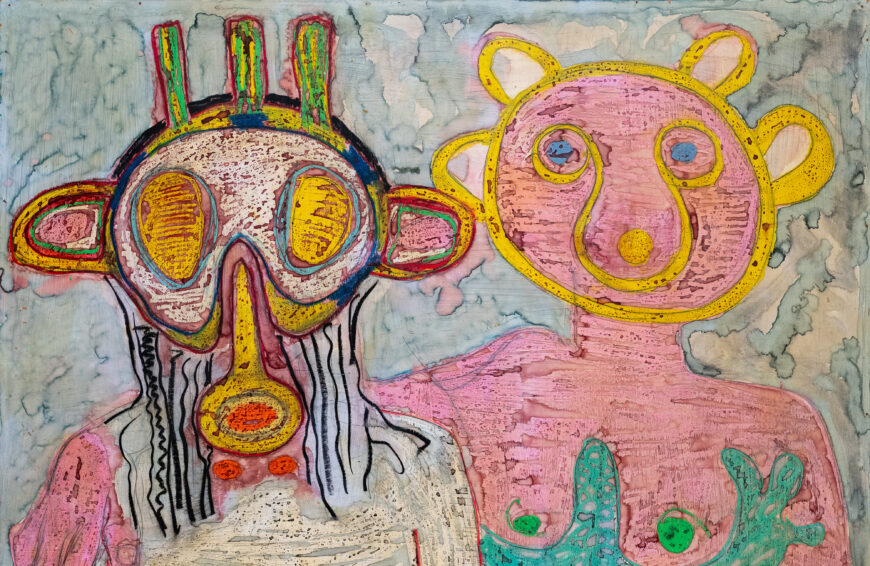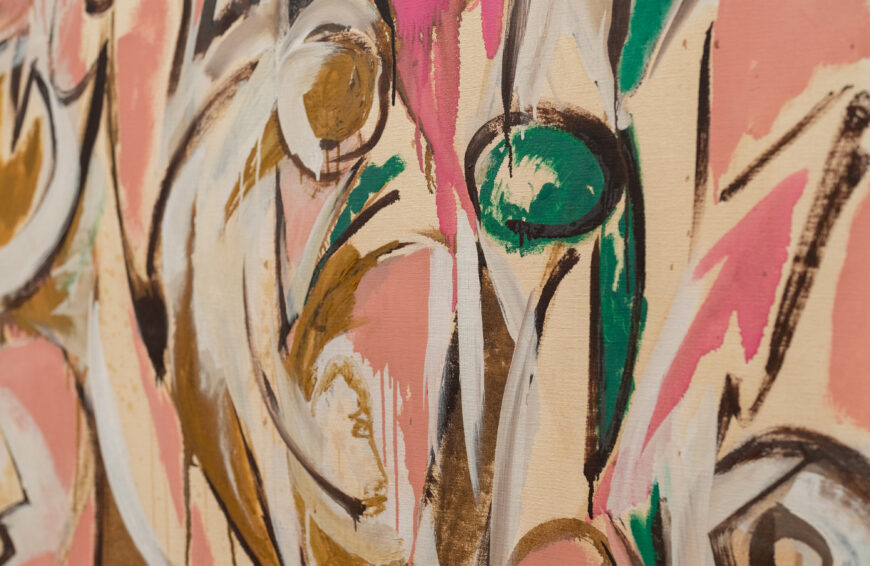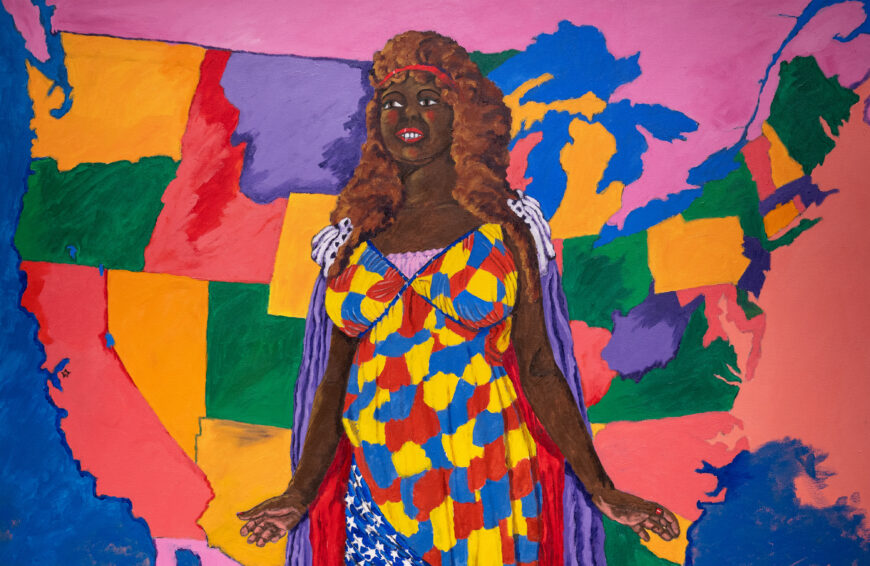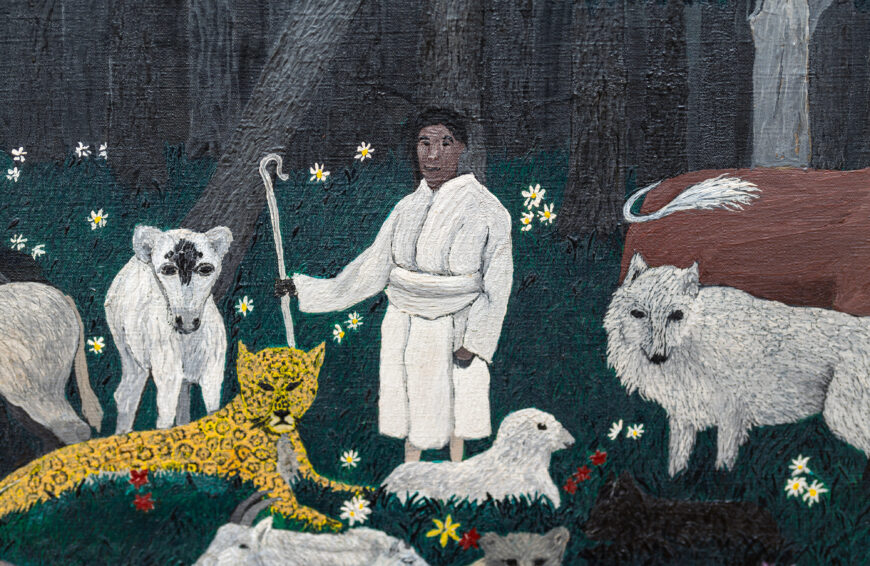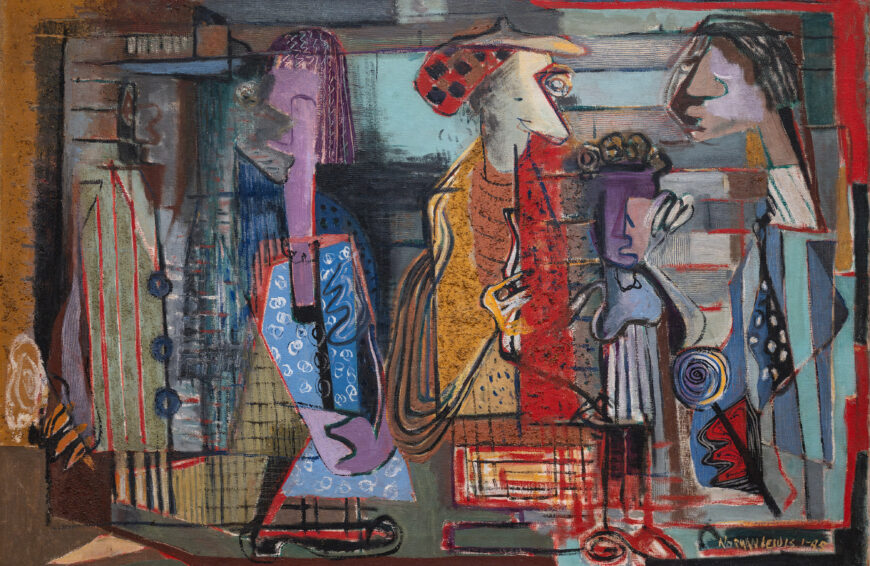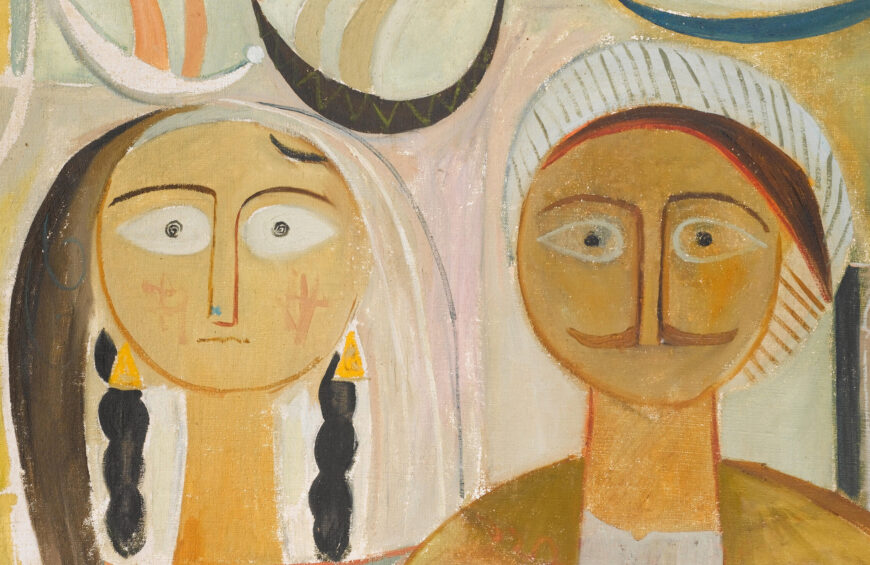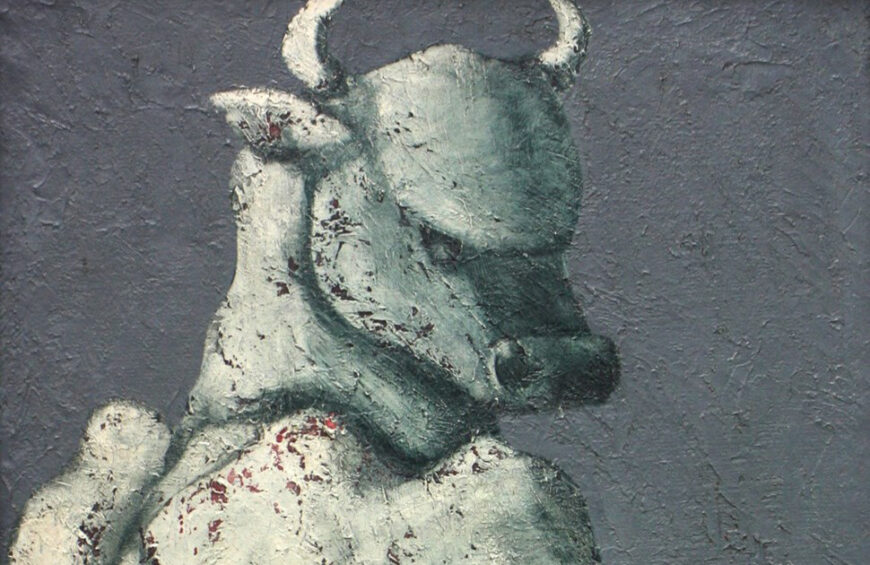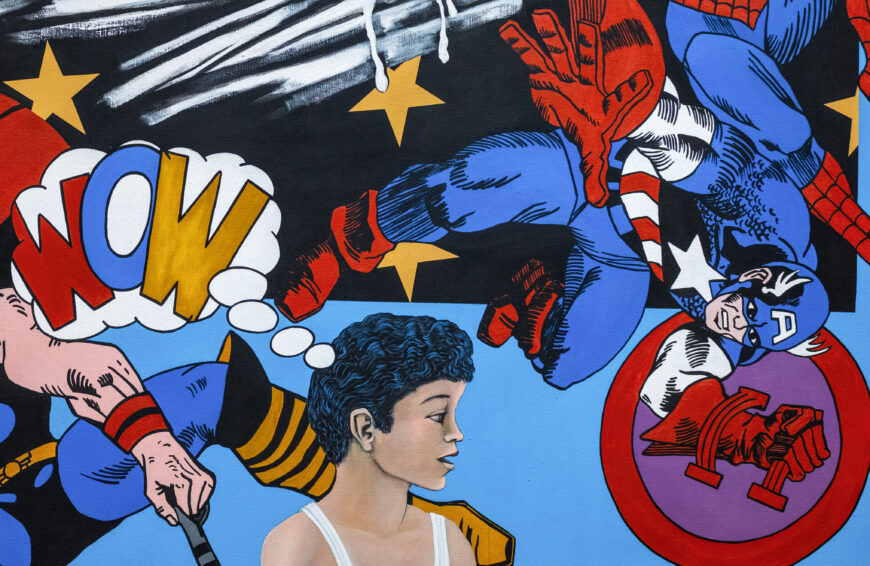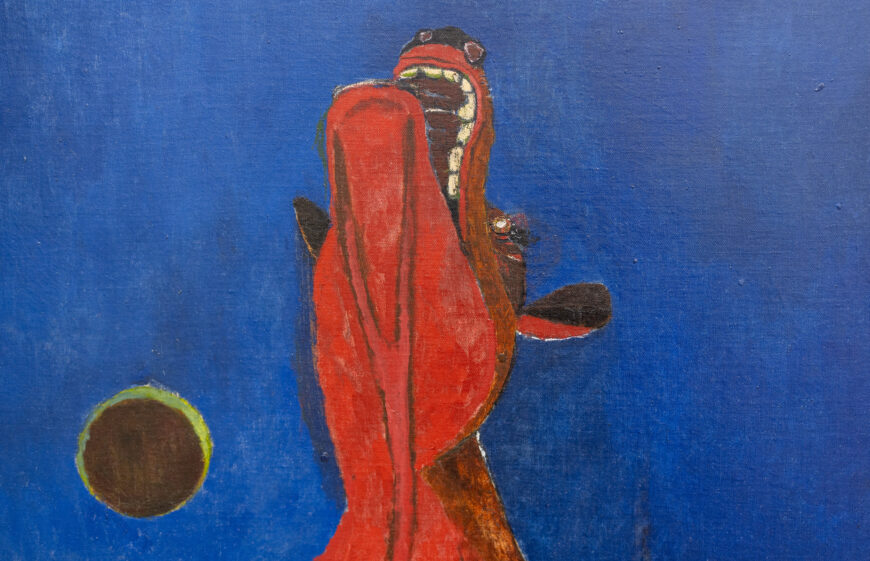Jess (Burgess Franklin Collins), If All the World Were Paper and All the Water Sink, 1962, oil on canvas, 96.5 x 142.2 cm (Fine Arts Museums of San Francisco) © estate of the artist
[0:00] [music]
Dr. Beth Harris: [0:05] We’re in the photo studio at the de Young Museum, part of the Fine Arts Museums of San Francisco, and we’re looking at a painting from 1962 by an artist named Jess called “If All the World Were Paper and All the Water Sink.”
Emma Acker: [0:20] What really strikes you when you’re looking at this is this kaleidoscopic array of imagery vying for attention.
Dr. Harris: [0:28] This is a painting that rewards close looking.
Emma: [0:32] There’s this incredible tension and contrast between this circle of children in this sunlit glen engaged in a circle dance of some kind — which, for the artist, was representative of sun worship or an engagement with the universe, a primordial state of wonder, and curiosity, and innocence.
[0:54] Then, above, you have this menacing mushroom cloud. It’s encircled by this blue omega symbol. This is the last letter of the Greek alphabet and often connotes the end. So you have the destructive force and power of atomic energy contrasted with joy and youth and promise of the children below.
Dr. Harris: [1:16] The mushroom cloud could only be one thing, and that is the nuclear bomb that was dropped first on Hiroshima and then soon after on Nagasaki. We know that the artist worked for the Manhattan Project, the organization that developed the technology behind the nuclear bomb.
Emma: [1:32] He studied as a chemist at the California Institute of Technology and then he was drafted into the US Army Corps of Engineers and worked on plutonium for the Manhattan Project, and after being discharged from the army in 1946, went to work for the Hanford Atomic Energy Project, but he talked about having a dream that the world was going to completely destruct by 1975.
[1:58] It was his dismay at the threat of atomic weaponry that caused him to abandon his scientific career and dedicate himself to art.
Dr. Harris: [2:06] Also a story that the artist saw film footage of the aftereffects of the bomb in Hiroshima and was distraught at what he saw, and soon after, gave up this work as a chemist.
Emma: [2:18] It’s at that moment that he dedicates himself to painting full-time and he changes his name from Burgess Franklin Collins to just Jess.
Dr. Harris: [2:27] The paint at the very base of that mushroom cloud almost sticks out like spikes toward us.
Emma: [2:34] There’s an absolute violence in the way that he’s applied paint to some areas of the canvas, but it contrasts with this tapestry-like surface in other areas.
Dr. Harris: [2:44] We do have this privileged view, where we see the circular form of the Earth below, the large male figure who we see in profile and who seems to be observing all of this and dealing cards, perhaps tarot cards. I get the sense that the artist is commenting on how we’re taking chances with the Earth itself, with human life.
[3:07] Emma: There’s an enigmatic quality to this shadowy figure. We’re not certain who he is. Is this a self-portrait? Is the artist referring to his own role early on in his life in contributing to the development of atomic weaponry?
Dr. Harris: [3:22] On the right side, we see a parrot, who seems to have his mouth around the neck of an owl whose wings are outstretched.
Emma: [3:30] The owl bears a key in its talons and swoops down over the group of children. Is this the key of wisdom? Is the owl bringing or taking away this knowledge?
Dr. Harris: [3:44] We know that the owl is associated with the goddess Athena, the goddess of wisdom, and so perhaps this idea of unlocking Pandora’s box, that idea of what knowledge can bring. We don’t always know what will follow from the knowledge that we seek.
[3:59] The parrot because it parrots, it mimics the speech of human beings, is sometimes associated with folly, so here we have folly or the foibles of mankind overwhelming wisdom.
[4:13] The title of this painting is a take on a nursery rhyme — “If All the World Were Paper and All the Waters Sink,” and the nursery rhyme goes, “If all the world were paper and all the sea were ink, if all the trees were bread and cheese, what should we have to drink?”
Emma: [4:30] It actually comes from a 17th-century English book of nonsense verse, which I think is really apt because in Jess’s paintings we see these mysterious and open-ended weavings of narratives that sometimes cohere and sometimes seem to pull apart.
[4:48] And just as children can weave sense from nonsense, in Jess’s paintings, there’s this way in which we can understand an underlying message or idea and there are many possible interpretations we can bring to the works.
Dr. Harris: [5:03] You mention the way that children make sense from nonsense, but in a way, this painting is about the way nonsense comes from sense, the way that rational thinking has led to the nonsense, the insanity of World War II.
Emma: [5:20] We have engineered the ability to destroy our species, and yet at the same time we’re born with this innate curiosity and wonder that can sometimes lead us down these darker paths.
[5:34] [music]


